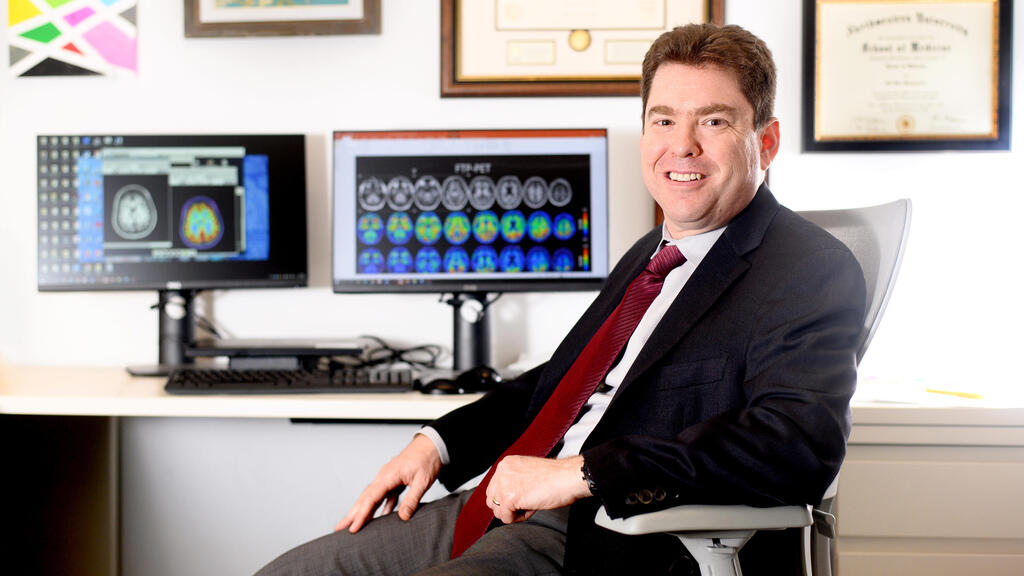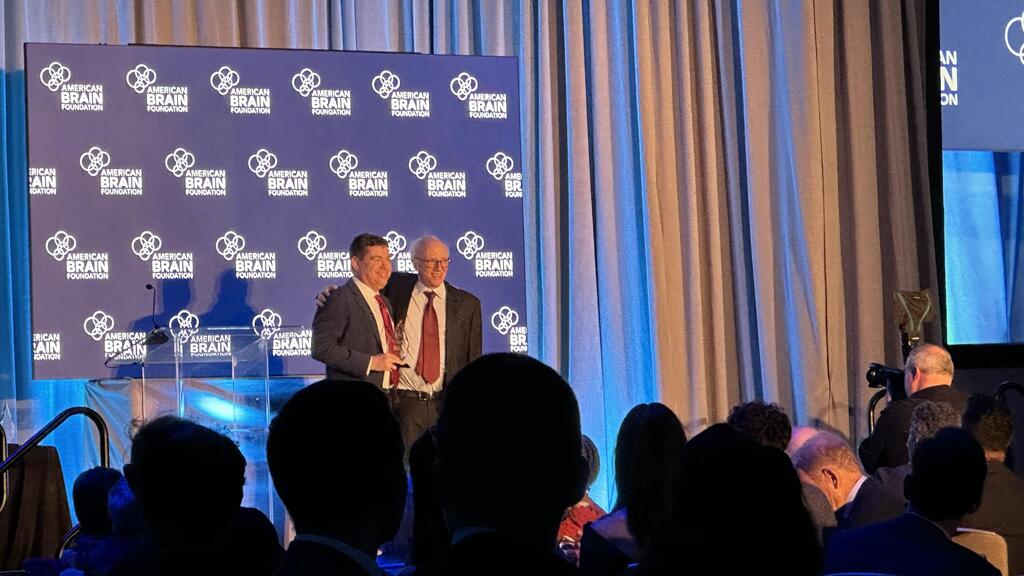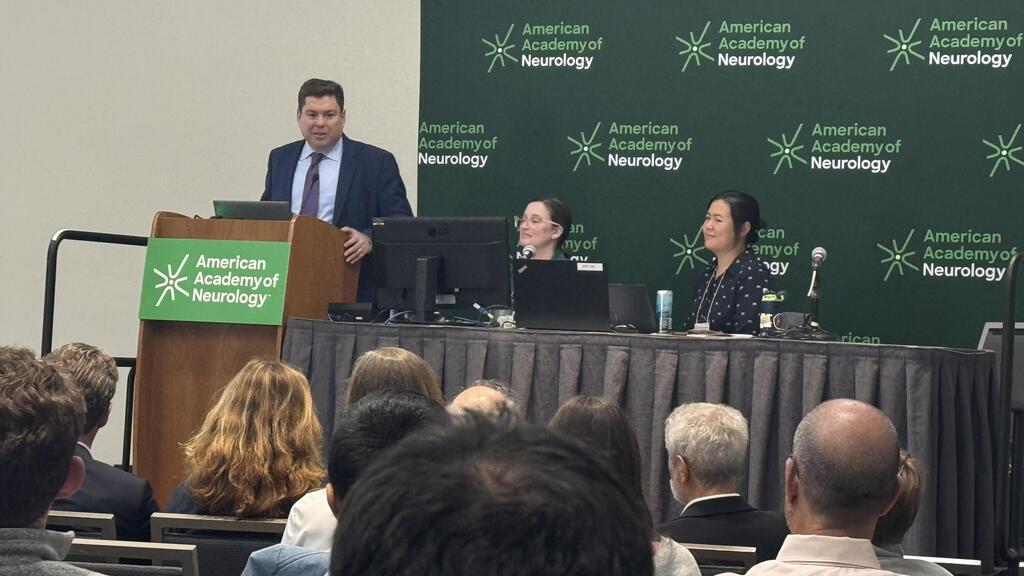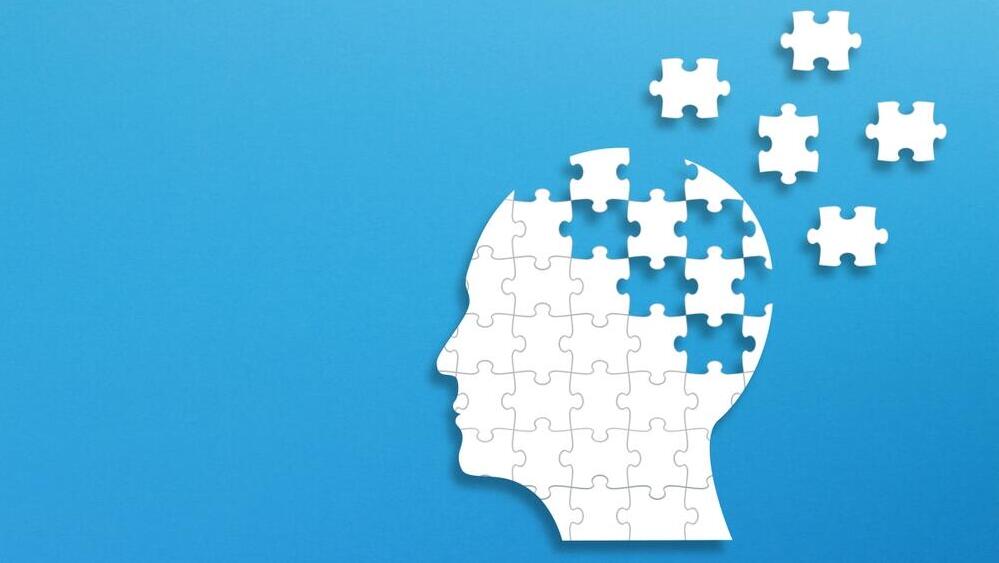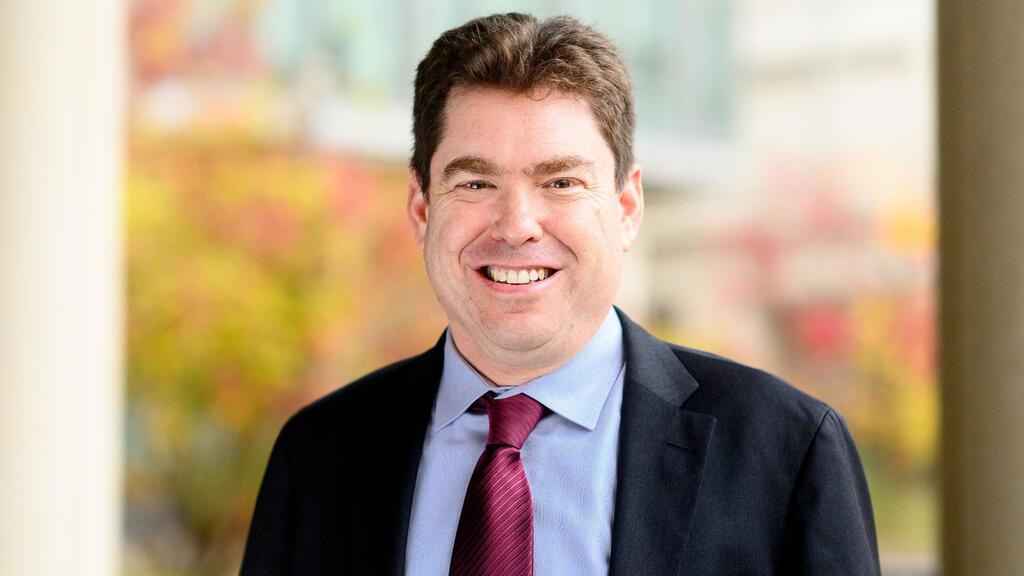Getting your Trinity Audio player ready...
Professor Gil Rabinovici, a renowned Israeli-American neurologist and global expert on dementia, has been awarded the 2025 Potamkin Prize—known as the "Nobel Prize of Alzheimer’s research" — for developing brain imaging techniques that allow for the diagnosis of Alzheimer’s before symptoms appear.
But during the award ceremony, Rabinovici used his moment on stage not only to thank his mentors and colleagues but also to deliver a pointed message about rising antisemitism on U.S. college campuses. His remarks were met with applause.
The prize, jointly awarded to Rabinovici and his research partner Professor William Seeley, is considered the most prestigious in the field of neurodegenerative disease research. It has been presented annually since 1988 by the American Academy of Neurology (AAN) to researchers who have significantly advanced the understanding of conditions such as Alzheimer’s, frontotemporal dementia and Pick’s disease. Rabinovici is the first Israeli recipient.
Rabinovici, 53, is married with two children and originally from Jerusalem. After completing his military service, he moved to the U.S. for his studies, earning an undergraduate degree from Stanford University.
He then completed his medical degree at Northwestern University in Chicago, followed by a residency in neurology and a fellowship in memory disorders and neurodegeneration at the University of California, San Francisco (UCSF), where he now directs the Alzheimer’s Disease Research Center.
Receiving the award marked a major milestone in his career. “It was a tremendous honor,” he said. “I felt deep gratitude — to my mentors, to the students I’ve worked with and to the opportunities I’ve had."
“I also felt proud to represent Israel, especially at a time like this. Israel’s contributions to science are vastly disproportionate to its population size and it’s important that this excellence is recognized,” he said.
In his acceptance speech, Rabinovici addressed the surge in antisemitism — a topic he had previously spoken about in an interview with Ynet last year. “Over the past year, I’ve witnessed antisemitism I hadn’t seen before — even within my own institution,” he said.
“As a proud Jew and Israeli, this recognition comes at a difficult moment. We’re seeing a rise in virulent antisemitism, of the kind I’d only heard about from my grandparents who survived the Holocaust. Some people — even at my institution — have called for the exclusion of Israelis from science and medicine based solely on nationality," he continued.
“They know nothing about my values or beliefs. As scientists and physicians, we must lead with empathy and recognize the humanity of everyone affected by this tragic conflict. But this hatred has no place in our hospitals or research institutions.” His words drew a standing ovation.
Speaking after the event, Rabinovici added: “As an Israeli experiencing firsthand the antisemitism spreading across campuses — including my own medical campus — I felt it was important to speak up. What we’re seeing isn’t criticism of the government or the war in Gaza — it’s classic antisemitism we haven’t seen in decades. We can’t ignore it.”
Alzheimer’s disease has become a global health crisis in recent years, with a sharp increase in cases placing immense strain on health care systems, patients and families. The disease has no cure and as life expectancy rises so does the urgency to develop early diagnostic tools and effective treatments.
7 View gallery


Pro-Palestinian rally on US campus
(Photo: Editorial Credit Phil Pasquini/Shutterstock)
“Alzheimer’s is the most common cause of dementia,” Rabinovici explained. “It’s triggered by protein deposits in the brain that disrupt the function of neurons, leading to brain degeneration, memory loss, cognitive decline — and eventually, a loss of independence.”
Unlocking the brain’s hidden story
Rabinovici’s research has focused on two hallmark brain proteins in Alzheimer’s: amyloid and tau. “Alzheimer himself described these deposits in 1906 during an autopsy of the first patient he treated,” Rabinovici said.
“At the time, they didn’t know what the proteins were but, by the end of the 20th century, we’d identified them — and some of the genetic factors that contribute to the disease. That’s when we began to understand how it develops,” he explained.
Get the Ynetnews app on your smartphone: Google Play: https://bit.ly/4eJ37pE | Apple App Store: https://bit.ly/3ZL7iNv
For decades, Alzheimer’s could only be confirmed after death via brain autopsy. Clinicians could suspect it in elderly patients with memory problems but had no way to confirm it in living individuals. The diagnostic breakthrough came in the mid-2000s with the development of PET (positron emission tomography) scans that could detect protein buildup in the brains of living patients.
“At first, PET scans allowed us to see amyloid. About 10 years later, we could detect tau as well. Together, that gave us the ability to see in living patients what pathologists had only seen postmortem,” he said. “I was fortunate to start my memory fellowship just as these technologies became available, so I was involved from the beginning.”
What have you learned?
“We’ve learned that amyloid deposits begin forming 20 years before any memory symptoms appear,” Rabinovici said. “This means the disease starts long before signs of brain degeneration, giving us a window to identify at-risk individuals and potentially intervene before symptoms set in.”
He added: “We later discovered that most people over 50 have some tau buildup in memory regions of the brain — like the hippocampus — but by itself, tau has minimal impact. However, when amyloid and tau appear together, it creates a storm that causes the tau to spread throughout the brain. That’s what leads to changes in brain network function, synapse loss, cognitive decline and ultimately dementia.”
Changing the rules of diagnosis
Rabinovici’s research spans two key areas: understanding the biological mechanisms of Alzheimer’s through longitudinal studies that link protein spread to cognitive decline, and integrating diagnostic tools into clinical practice to enable earlier and more precise treatment.
Between 2016 and 2018, Rabinovici led a major study with Medicare — the main U.S. health insurer for seniors — to assess whether amyloid PET scans could improve diagnosis and treatment decisions for Alzheimer’s patients.
The study, called IDEAS (Imaging Dementia: Evidence for Amyloid Scanning), enrolled more than 18,000 patients across 600 clinics nationwide. All participants had cognitive decline or dementia with an unclear clinical diagnosis. After undergoing amyloid PET scans, researchers analyzed how the new information affected diagnosis and treatment.
“We found that the scans changed the treatment plan in over 60% of cases and altered the diagnosis in about 35%,” Rabinovici said. “For example, if a doctor suspected Alzheimer’s but the scan showed no amyloid, the diagnosis was revised to another condition — sometimes something treatable, like depression, sleep disorders or vitamin B12 deficiency.”
In these cases, PET scans didn’t just improve diagnostic accuracy — they enabled more targeted and effective care. “As a result of our findings and other advancements, Medicare changed its decade-long policy in 2023 and began covering the expensive scan, which costs thousands of dollars. That opened access for many more patients.”
The impact of PET scans extended beyond clinical care. They also transformed the development of new Alzheimer’s drugs. For years, clinical trials relied on symptoms alone to select participants — leading to inconsistent results. Now, trials can confirm whether participants actually have amyloid in their brains, improving both precision and outcomes.
According to him, what's changed now is that clinical trials for drug development no longer rely solely on clinical diagnoses. Instead, they incorporate amyloid scans or other biological tests to confirm the presence of the disease and assess whether treatments are actually clearing amyloid from the brain.
“There’s now a new generation of drugs — antibodies — that help remove amyloid from the brain, and these were developed thanks to the scans,” he said. “They allowed us to recruit the right patients — those with amyloid buildup in the brain — and also to verify that the drugs were working, meaning we could see the amyloid disappear after treatment.
“These drugs don’t cure the disease or restore memory but they slow the clinical decline by about 30% — which is highly significant, especially when treatment begins early, while patients are still living independent lives and enjoying a high quality of life.”
Coming soon: Early detection through a simple blood test
Another breakthrough is the development of innovative blood tests for early detection of Alzheimer’s — a major step toward accessible, preventive dementia care.
“Thanks to the amyloid scans, we were able to develop blood tests that are about 90% accurate in detecting amyloid and tau buildup in the brain — even at the earliest stages,” he said. “We can imagine a future where someone with a family history of the disease might, at age 60 or 65, take a test to see whether they have amyloid buildup — just like we test cholesterol or other risk factors.
“And if the test shows that amyloid is present and the person is at risk for memory problems, we’ll be able to intervene very early and potentially prevent cognitive decline. We’re only at the beginning of this new era — and it’s exciting and incredibly rewarding to be part of it.”
Will there ever be a cure for Alzheimer’s? One can only hope. But even with today’s treatments slowing disease progression, the future seems to hold even greater potential.
“I think this new generation of drugs is a good start,” said Prof. Rabinovici. “They may not cure the disease, but they do have a clinical effect.”
According to him, the greatest hope now lies in advanced biological therapies that target not just amyloid, but other components involved in the disease process. “We’re really at the beginning of a breakthrough with biological treatments that can also target other mechanisms — not just amyloid, which has been our focus for years — but also tau deposits, which are more closely linked to cognitive decline and symptoms.
“The prevailing belief is that, in the future, patients will be treated with a cocktail of drugs that target not just amyloid, but also tau, inflammation and the physiological changes happening in the brain. This kind of treatment could slow the disease even more significantly than the first-generation therapies we have now.”
He added, “Clinical trials are already underway to test whether treating amyloid buildup during the preclinical stage — before symptoms appear — can delay or even prevent cognitive decline. The results of those studies will come in the next few years.”
What do you feel when you hear about doctors and researchers leaving Israel?
"I’m definitely aware of this trend but it’s hard for me to judge others too harshly because I myself left Israel over 30 years ago in search of academic opportunities,” he said.
“That said, even though I’ve lived abroad for many years, it’s important to me to support Israel and continue training people in the field who want to do fellowships in the U.S. Quite a few Israelis have spent time in my lab and today they’re neurologists or radiologists helping to advance this research back in Israel.”
Is there a chance you’ll return?
“You never know what the future holds. Lately I’ve been thinking about it a lot more than I have in many years.”



